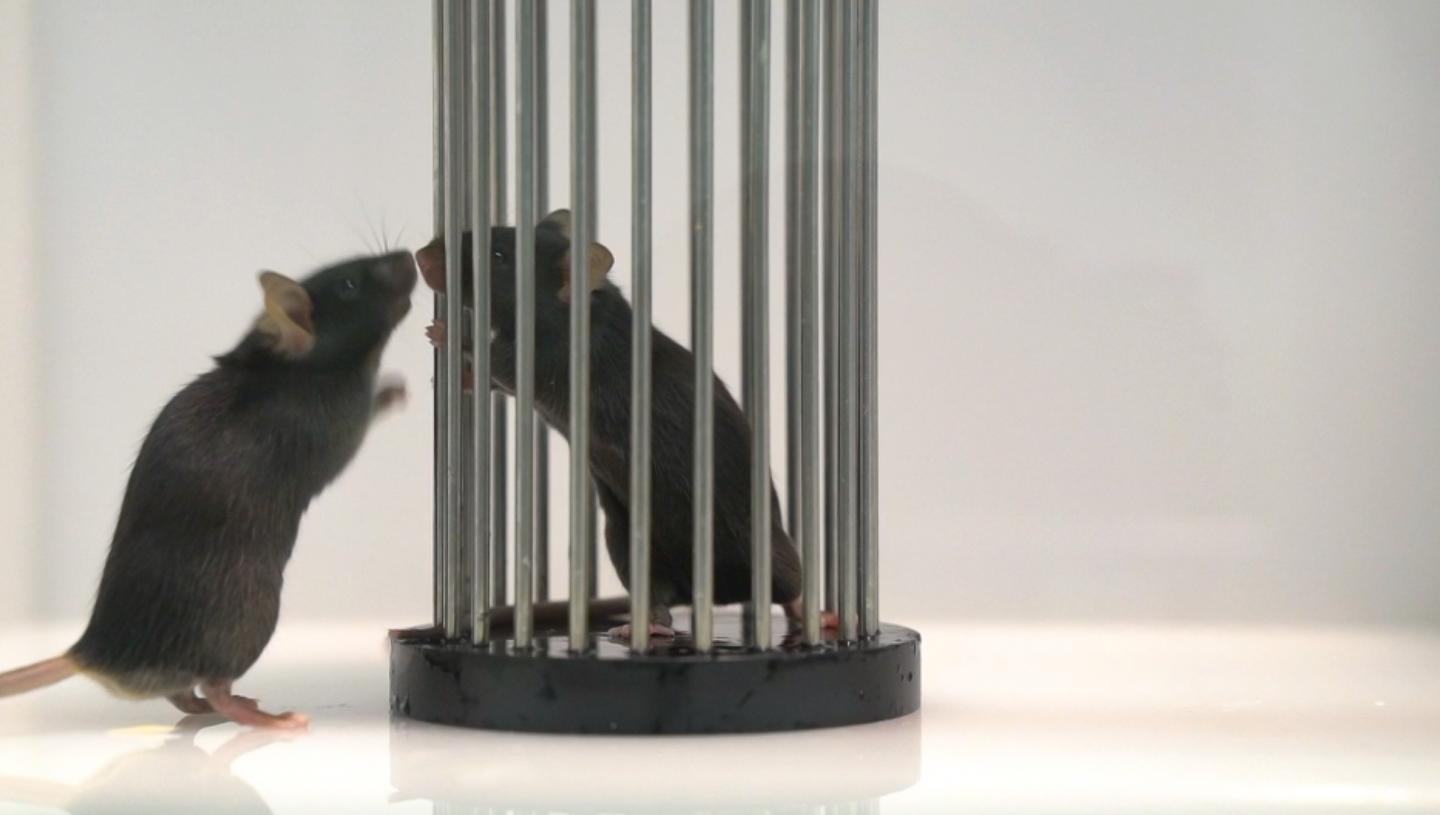By deciphering the neural mechanisms involved in food consumption, UNIGE scientists demonstrate the importance of social interactions when choosing food and, more broadly, when adapting to the environment

Credit: © UNIGE – Laboratoire Lüscher
How do we choose our food? By studying the neurobiological mechanisms involved in food choices of rodents, neuroscientists at the University of Geneva (UNIGE), Switzerland, have identified the important and lasting influence that peers can have on eating habits. Indeed, sensory stimuli linked to social contacts profoundly modify the neural connections of the networks involved in food choice, highlighting the social transmission of a food preference. In addition, these studies, published in the journal Science, highlight the role of social connection in the interpretation of sensory stimuli and in the ability to adapt to the environment. This mechanism, which appears to be deficient in people with autistic disorders, may partly explain their social difficulties.
For several years now, the brain mechanisms linked to nutrition have been under the scrutiny of Christian Lüscher’s team, professor in the Department of Basic Neurosciences at UNIGE Faculty of Medicine. “To understand how the brain perceives food, we looked at food choices in an animal model, and more specifically how these choices are being built and whether they can be influenced,” says Christian Lüscher.
In the wild, mice, which live in colonies of several dozen individuals, have the ability to adapt to their environment and discover new foods. However, to limit the risk of poisoning, “taster” mice are designated to assess the safety of an unknown food. “But then how do they pass on the information to their peers? Can these few mice permanently change the feeding behaviour of the whole group? We wanted to understand how, in the brain, the balance between the innate and the acquisition of new behaviour through social contact is forged,” explains Michaël Loureiro, a researcher in Professor Lüscher’s laboratory.
Thyme or cumin?
In nature, rodents have a clear preference for thyme over cumin, a spice they almost never consume. To test their hypothesis, the scientists tried to counterbalance this innate preference by observing two mice: one, the demonstrator, is educated to appreciate cumin. After a meal flavoured with this spice, it is brought into contact with another mouse – the observer – who, like all fellow mice, has an innate preference for thyme. The two mice share the same cage for 30 minutes. Twenty-four hours later, two meals are presented to the observer: one flavoured with cumin and the other with thyme. The observing mouse will then show a taste and interest in cumin, showing that the information between the two mice has been transmitted efficiently and durably through odorous cumin molecules that the observer detected on her peer the day before.
The researchers used methods to specifically mark the neurons engaged during the experiment in order to understand their functioning and communication properties. “We observed that not only did these neurons receive information from the olfactory sensory cortex, but also that inter-neural communication was modified as a result. Learning a new smell strengthens synaptic connections and modifies the animal’s natural choice after contact with its fellow mouse according to a specific brain path: first, the olfactory system detects the smell. The olfactory cortex then connects to the pre-frontal cortex, involved in decision-making choices, which in turn is connected to the ventral striatum, which manages motivation and the search for a reward,” explains Michaël Loureiro.
To confirm their observations, the researchers used optogenetics – a technique that allows to precisely follow and modulate neural activity – to cancel the neural modification induced by the contact between the two mice and thus erase the memory of cumin in the observing mouse. “And the mouse turned away from the cumin. By removing the reinforcement of connections in the network that we had identified, we proved that the mechanism we suspected was necessary for learning through social contact,” adds Christian Lüscher.
The basis of the social mechanisms of adaptation
The Geneva scientists demonstrate that even in mice the relationship to food is highly influenced by social interactions, to the point of disrupting physiological regulatory mechanisms. But beyond food choices, this study highlights the neurobiological mechanisms of social interactions and the learning they generate. “Understanding what networks and mechanisms are needed to integrate new information received from another individual and how this information is then used to adapt to the environment are fundamental questions,” says Michaël Loureiro. “Indeed, these mechanisms appear to be dysfunctional in some neurodevelopmental disorders, such as autism spectrum disorders.”
The social difficulties of people with autism may indeed stem from an inability of the sensory cortex to properly treat stimuli received from outside. Peer information would be poorly integrated into the prefrontal cortex and its transmission disrupted, making it difficult to interpret external stimuli from the outset.
###
Media Contact
Michaël Loureiro
[email protected]
Related Journal Article
http://dx.




